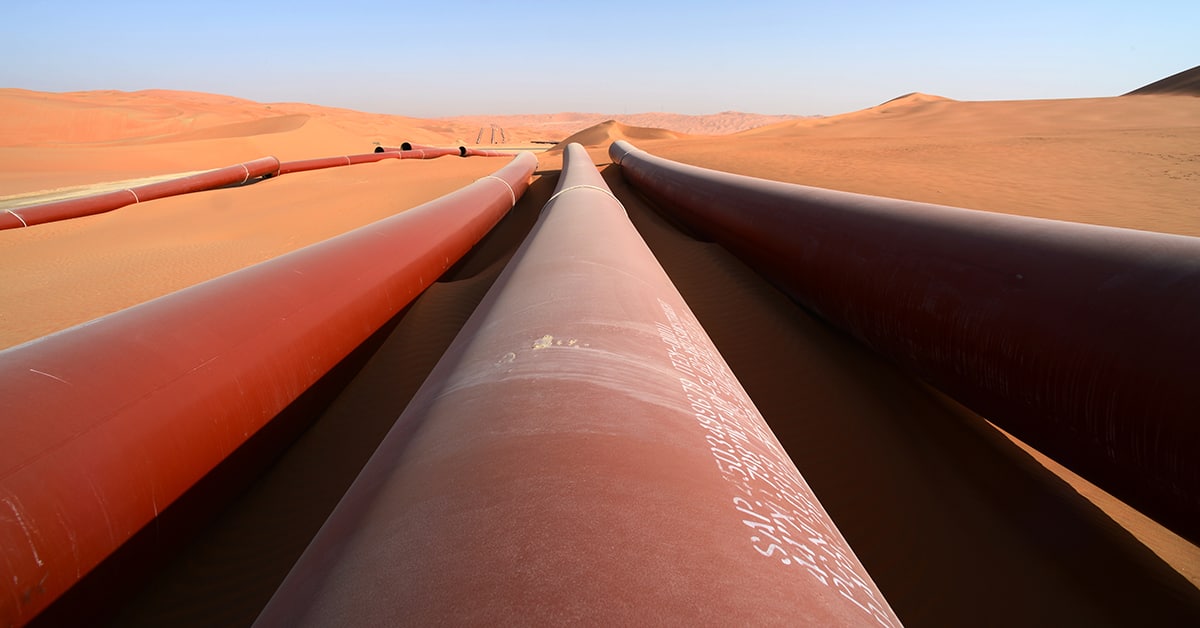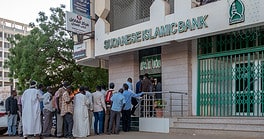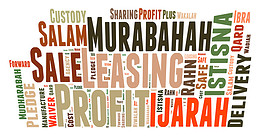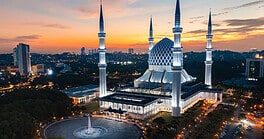Middle Eastern institutions and economies push for sustainability.

Economies and institutions in the Middle East are placing increasing emphasis on sustainability. This may seem contradictory, as the region produces over 25% of the world’s oil, has four of the top five oil-producing member countries of OPEC+ (the Organization of Petroleum Exporting Countries plus Russia and several others who align with OPEC) and has one of the largest exporters of liquified natural gas in Qatar. Both oil and gas reserves in the region are substantial. However, regional countries acknowledge they cannot rely on hydrocarbons indefinitely; and most have introduced diversification and sustainability strategies. The sustainability focus in the region is gathering pace leading up to the UN’s COP28 climate change conference in 2023, hosted by the United Arab Emirates (UAE).
The Gulf Cooperation Council (GCC) countries aim to decrease use of fossil fuels for generating electricity and intend to raise the capacity of renewable energy to meet local electricity demand. Plans also include increasing participation of the private sector and reducing the role of the public sector. In addition, participants believe that the climate agenda could provide opportunities to further diversify GCC economies in growth sectors, such as the oil and gas industry, for the energy transition.
“There is an excellent and timely opportunity to diversify the economy further, using a green growth strategy and playing a leading role in the global transition to low-carbon economies,” says Issam Abousleiman, World Bank regional director for the GCC, the Middle East and North Africa (MENA). “The region could use the green growth transition to focus policies on developing green technologies that would reverse trends in productivity and enable the region to grow faster.”
GCC countries’ total GDP was estimated at around $2 trillion in 2022. According to the World Bank, their combined GDP could grow to an expected $6 trillion by 2050 if they operate as usual. However, suppose the GCC countries implemented a green growth strategy that would help accelerate their economic diversification. In that case, the World Bank says their GDP could potentially grow by 2050 to over $13 trillion.
Private Investment Speeds Transformation
Increasing private sector investment will be necessary to boost sustainability and the energy transition. Green finance is critical for new investments in renewable energy, sustainable transport and water management. In part, the lack of sustainable finance has resulted from a lack of investable projects. Sometimes, these have not made the necessary hurdles regarding transparency, institutional framework and policy. The region has many potential developments in solar energy and in green and blue hydrogen. In its fall 2022 Gulf Economic Update, the World Bank says that it is “important that GCC governments and sovereign wealth funds play a role in crowding in private sector investments and putting more emphasis on equity rather than debt financing.”
The UAE has initiated many projects and actions—particularly within the financial sector and sustainable finance—focusing on introducing systems to deliver funds from private finance to unlock necessary infrastructure investment and meet net-zero targets. Abu Dhabi is becoming a central commercial hub for nature-based carbon credits.
Financial institutions in the region are becoming more active in sustainable finance and want to increase activity. For example, following its green bond issue of $3 billion in 2022, Saudi Arabia’s Public Investment Fund (PIF), the kingdom’s sovereign fund, raised a further $5.5 billion in green bonds in February 2023. In three tranches up to 30 years in tenor, the issue was oversubscribed six times with strong demand from international investors. This is part of PIF’s strategy to invest over $10 billion in green projects over the next three years. It also diversifies PIF’s debt funding strategy.
Head of the Global Capital Finance division at PIF, Fahad AlSaif, says, “PIF’s second green bond issuance underlines the role PIF is playing in supporting Saudi Arabia’s green agenda as well as diversifying the local economy and unlocking new and sustainable sectors. PIF has a specific Green Finance Framework with a sustainable investment program including projects in renewable energy, clean transportation, energy efficiency, pollution prevention, green buildings and sustainable water management.”
Green Financing Takes Root
First Abu Dhabi Bank (FAB), the largest bank in the UAE and one of the pioneers in sustainable banking in the region, has committed to the region’s energy transition and sustainability targets. In 2022, FAB facilitated more than $9 billion of sustainability projects in green sectors. In addition, the bank aims to provide $75 billion in green financing for 2022-2030. It has long been active in green bond issuance.
“In 2022, we executed around half of our bond issuance in a green format [$1.5 billion], including three public benchmark transactions, including the [then] largest-ever [$700 million] green issuance from a MENA bank,” says the bank’s Chief Sustainability Officer Shargiil Bashir.
FAB is also active in advising on and structuring sustainability-linked loans for clients, linked to performance indicators, with periodic sustainability performance targets, incentivizing the client to meet sustainability targets over the financing period.
As the world’s largest integrated oil and gas company, Saudi Aramco has a pivotal role in sustainability, as do domestic capital markets in the region within a challenging global financial environment. Aramco’s president and CEO, Amin H. Nasser, believes a balance must be followed between oil and gas investment; capital markets; and environmental, social and governance (ESG) considerations. Nasser believes an increased focus on ESG is positive. Nonetheless, if ESG-driven policies are followed with an automatic bias against conventional energy projects, the subsequent underinvestment could have implications for the global economy, energy affordability and energy security. According to Nasser, oil and gas projects’ cost of capital has risen due to a higher perceived risk, and capital scarcity is a common phenomenon driven by ESG.
Investment in the oil and gas sector has decreased sharply, with upstream investment in 2022 of around $400 billion. “Proponents of the popular energy transition narrative paint a picture of a utopian world where alternatives are ready to replace oil and gas almost overnight,” Nasser told the Saudi Capital Markets Forum in February, “Likewise, they assume the massive global energy system—including less-than-reliable electric grids in many developing countries—can be transformed instantly. Unfortunately, too many participants in capital markets believe this rhetoric rather than seeing the reality. As the energy crisis in Europe has demonstrated, alternatives are not ready to shoulder the heavy burden of global demand. Indeed, the world will continue to depend on oil and gas for the foreseeable future. … For a less-risky global energy transition, everyone—including capital markets—must take a more realistic view of how the global energy transition will unfold.” The main challenge for capital markets connected to the energy transition, he added, is striking the right balance between financing new energy sources and continuing to support conventional energy and decarbonization.
In October, Aramco announced the creation of a $1.5 billion sustainability-focused venture capital fund that aims to “invest in technology that can support a stable and inclusive energy transition.” Managed by the venture capital arm of Aramco, “The fund is an extension of the company’s efforts to meet the world’s growing energy demand with lower greenhouse gas emissions. The fund plans to invest in technologies supporting the company’s announced net-zero 2050 ambition for its wholly owned operational assets as well as development of new lower-carbon fuels.” Other initial focus areas will include carbon capture and storage, energy efficiency, nature-based climate solutions, digital sustainability, hydrogen, ammonia and synthetic fuels. “The fund will target investments globally.”
In 2022, green bonds and sukuk in the GCC region amounted to a record $8.5 billion involving 15 issues, up substantially from the previous year. Moreover, green and sustainability bonds and sukuk are expected to grow higher in 2023 in MENA as banks focus on financing sustainability projects and as demand by international investors grows for these investment instruments. Supporting this, in February 2023, Dubai Islamic Bank issued a $1 billion 5.5-year sustainable sukuk, the largest sustainable issuance by a Middle East bank since June 2021.
The UAE’s COP28 president-designate, Ahmed Sultan Al Jaber, group CEO of the Abu Dhabi National Oil Company (Adnoc) and chairman of Masdar, a UAE state-owned renewable energy company, stresses the need for partnerships. However, he acknowledges that much still needs to be done and that the path to net zero represents a huge transformation. Adnoc recently allocated $15 billion for decarbonization projects by 2030, including carbon capture, electrification, new carbon dioxide absorption technology and enhanced investments in hydrogen and renewables. It is part of a multiyear plan to meet Adnoc’s Net Zero by 2050 ambition.



